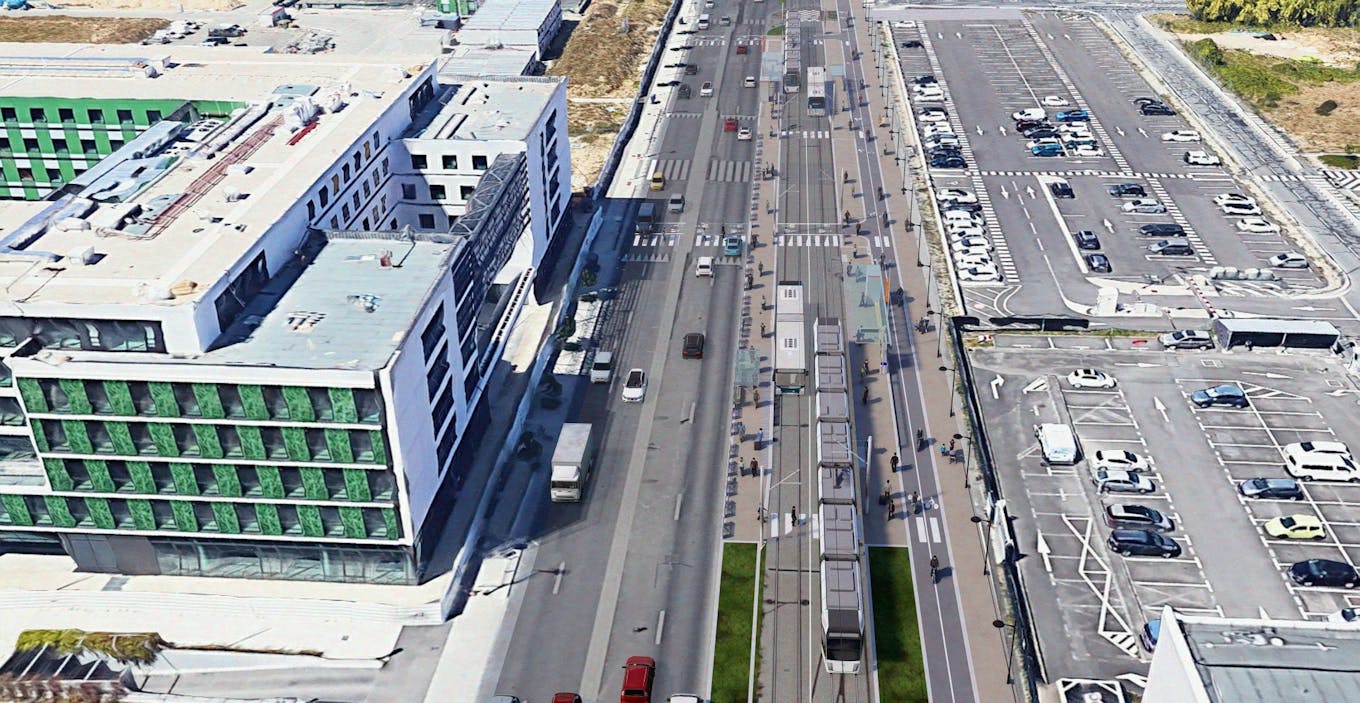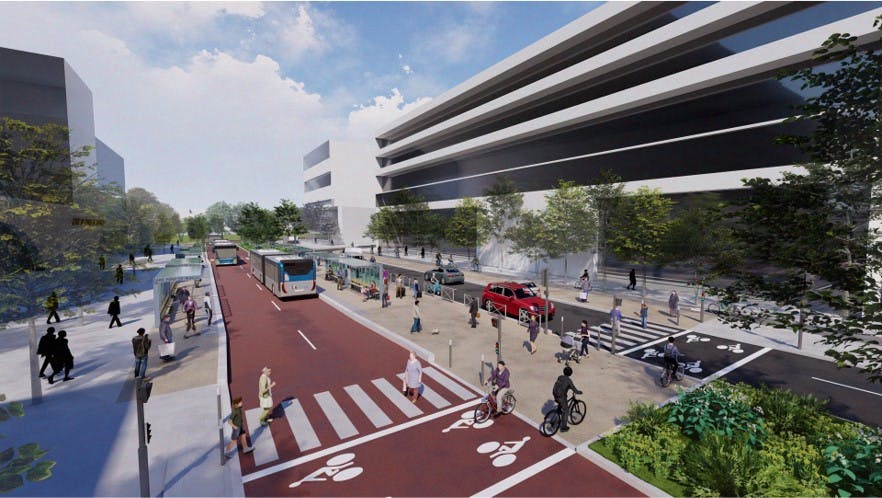Orly

The "Sénia" sector, currently undergoing major changes, is the heart of the line with three stations in the long term: Chemin des Carrières, Rue des Quinze Arpents, Pont de Rungis.
The call for architecture and urban planning projects "Inventons la Métropole du Grand Paris", which aims to enhance high-potential sites such as the Sénia logistics zone, will bring out the future Parcs en Scène and Sénia districts on the route of the project. Within this perimeter, the program will allow the construction of housing to accommodate 5,900 new inhabitants, and 4,500 new workers in offices. One of the major challenges of the Sénia-Orly is to offer a mobility solution to these future users.
Change at Pont de Rungis
It is possible that at first the Pont de Rungis station will not be served, because the rue des Quinze Arpents, through which the bus must pass, may not be available before the end of the work in the Sénia and Parcs en Scène districts. During this phase, a temporary station, Cité Jardin, would be served, as well as Cockpit – Pont de Rungis, which would allow connections with the RER C station and line 14.
When the ZAC are developable, a second phase of work will be undertaken so that the bus can use the rue des Quinze Arpents, which will make it possible to serve this new district and then to connect as close as possible to the Pont de Rungis multimodal interchange hub. The extended 393 will connect with the RER C and the extension of metro line 14, as well as the bus network.
In addition, a cycle path will be built along the extension of Rue des Quinze Arpents and will connect to the route of Rue Bas Marin and the Pont de Rungis multimodal interchange, in order to ensure the best bike/train connections.
Numerous developments are planned in the public spaces near the Pont de Rungis multimodal interchange hub, with the start of metro 14 in the future:
• a forecourt in the centre of the passenger buildings of the RER C and Metro 14 stations,
• a sharing area reserved for buses, taxis and car-sharing vehicles,
• Secure parking spaces for motorized 2-wheelers, bicycles.
The creation of a footbridge reserved for active modes (walking, cycling, scooters, etc.) is currently being studied.

Orly sector
The Orly sector has 5 stations, the last 3 of which will be located in the airport area: Maréchal Devaux – Caroline Aigle – Coeur d'Orly – Orly 4 – and Orly 1, 2, 3 (terminus of the line). The airport and its surroundings represent a major challenge given their attractiveness, both for the people who work there and for those who go there to catch a plane.
After the "Sénia" sector, the route runs on the east side of the road along the entire Avenue de l'Europe, using the T7 tram lane for a section of about 900 metres (shared section). The Sénia-Orly line will directly use the tramway platform, which offers platforms dedicated to buses in the extension of the tramway platforms (developments anticipated during the studies and construction of the T7 tramway), for the Caroline Aigle and Coeur d'Orly stations. The vocations of the two modes, tram and bus, whose origins and destinations are very different, are complementary and both meet the needs of their future users.
The ambition of the Coeur d'Orly district is to eventually bring together several hundred companies with nearly 65,000 m² of office space, a 40,000 m² shopping centre and 35,000 m² dedicated to the hotel industry. By 2040, the objective is set at 17,000 new jobs created, served by the Sénia-Orly line, an extension of line 393.
Airport area
The airport area, which is very restrictive, cannot offer a dedicated traffic corridor for the Sénia-Orly. This is why the bus route is a particular challenge in this sector, especially in terms of travel time.
The Sénia-Orly bus will run on the general road in this area (like the other buses), and simple platform improvements will be made.